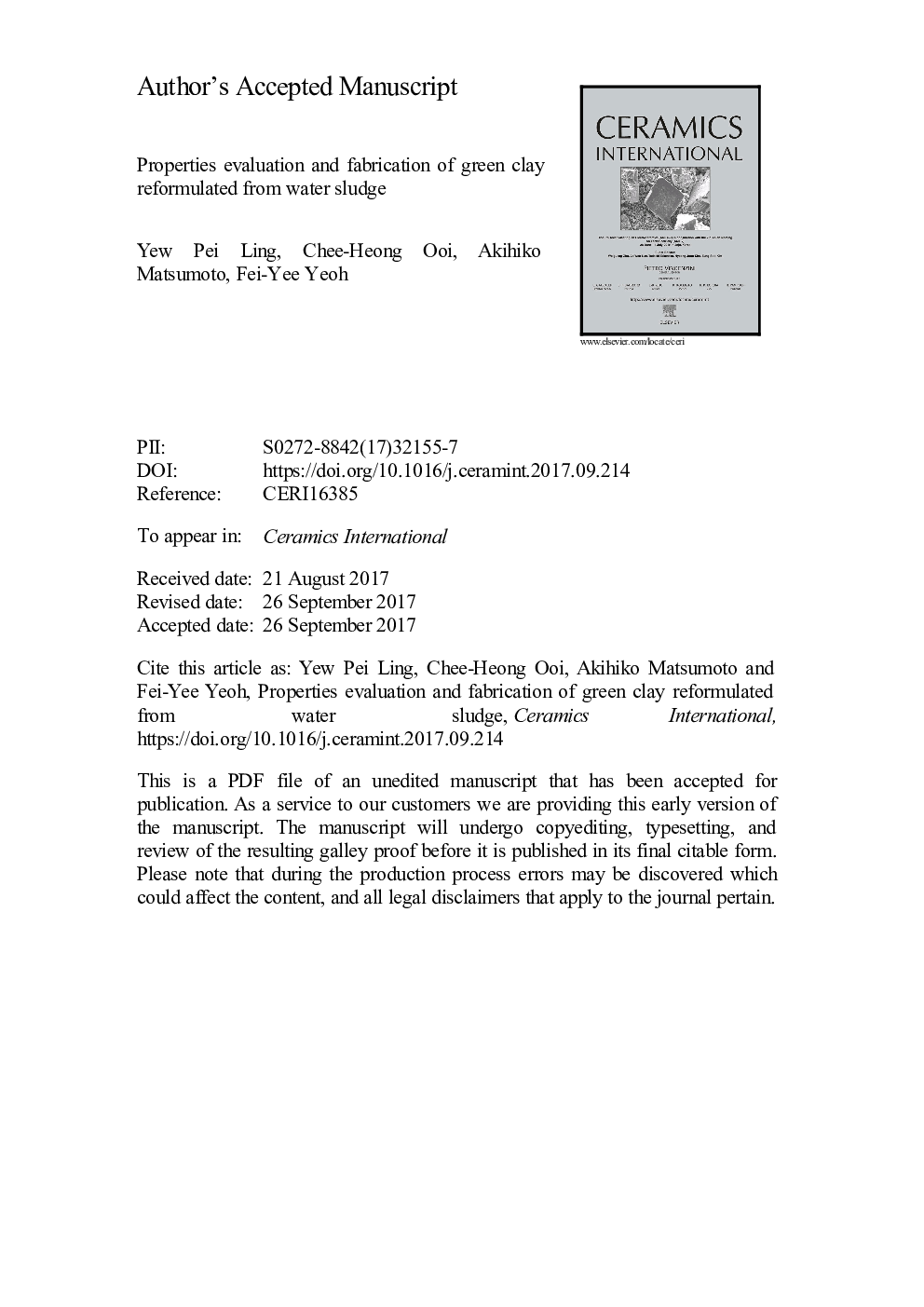| Article ID | Journal | Published Year | Pages | File Type |
|---|---|---|---|---|
| 7888739 | Ceramics International | 2018 | 49 Pages |
Abstract
Water sludge from Sungai Dua Penang fresh water processing plant has been successfully converted into functional pottery clay with improved physicochemical behavior and properties. Water sludge was generally made of kaolinite mineral that consisted of silica and alumina. At 7 h of milling duration, water sludge demonstrated a narrow particle size distribution at the size range of 107-150 µm. Water sludge owned a specific surface area of 27 m2/g with 8.8 nm (diameter) pore size and 0.05 cm3/g pore volume. Plasticity of clay body increased when clay formulation involved fine particles, e.g. water sludge or bentonite, which promote water adsorption ability. Fine particles with large surface area and better compaction also explained the enhanced hardness of pottery clay. The incorporation of clay minerals such as bentonite and sodium silicate into the formulation has facilitated metals immobilization within the clay body. Final clay product has a terra cotta color and performed a uniform shrinkage without obvious fracture. The fabrication of pottery wares from water sludge with minimized metals leakage has not only higher reutilize value but also a cost effective green method for handling waste and environmental issues.
Related Topics
Physical Sciences and Engineering
Materials Science
Ceramics and Composites
Authors
Yew Pei Ling, Chee-Heong Ooi, Akihiko Matsumoto, Fei-Yee Yeoh,
